How to Dehydrate Limes
This post may contain affiliate links. We may earn a commission if you purchase via our links. See the disclosure page for more info.
Learn to dehydrate limes to store in your pantry all year. They are great for adding to water and teas, flavor tea blends, making lime powder to add to baked goods, and so much more!
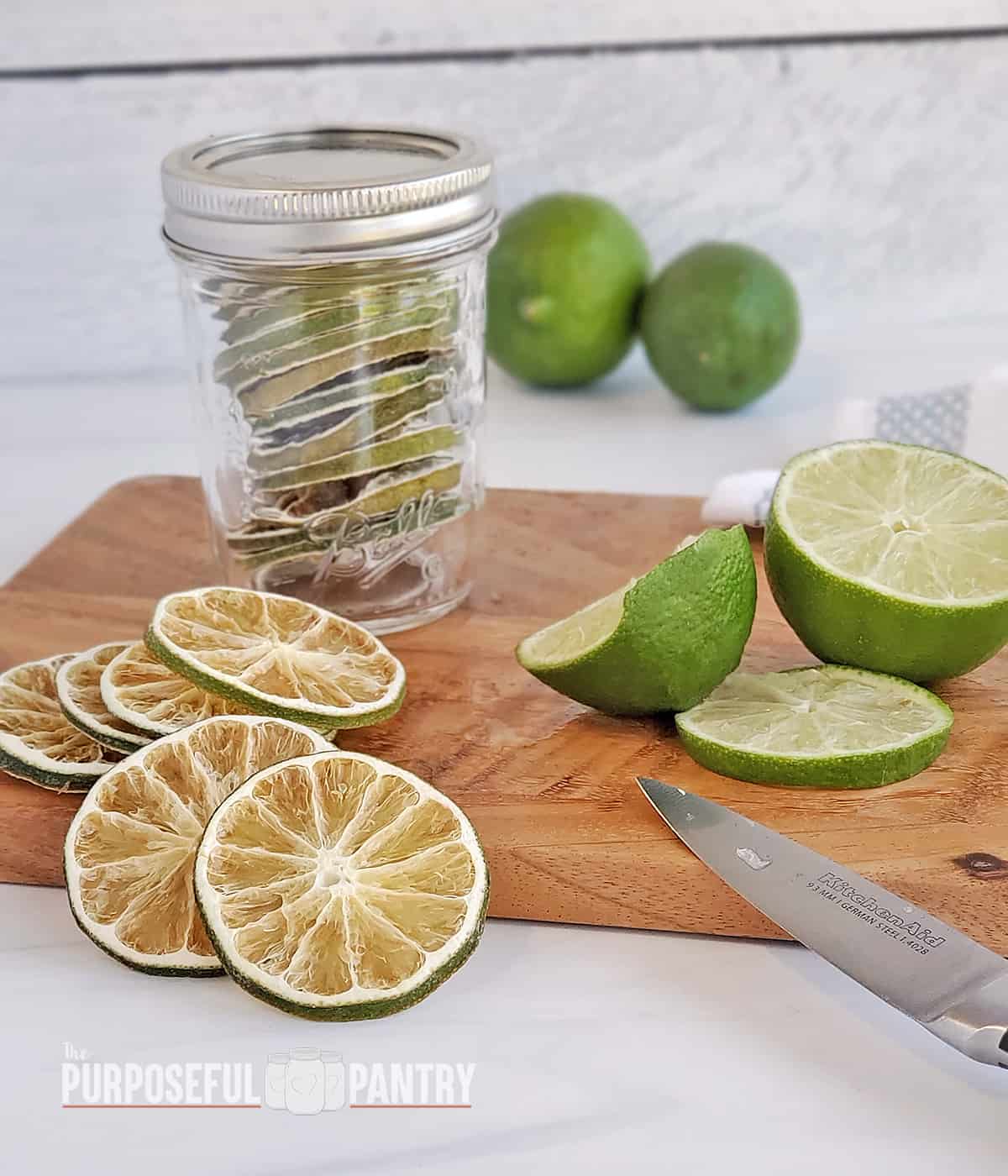
While citrus season is in the late winter and early spring in North America, good lime varieties are available all year round. You can take advantage of a great harvest season or a good sale at any time.
Limes of all varieties, make an easy first project for dehydrators. A simple slice and dry is all that is needed!
Types of Limes to Use
Generic green limes
- Key limes
- Bearss limes
- Tahiti limes
- Philippine limes
- Kaffir limes
- Finger limes
Dried limes are great for adding to lemonade, water, or teas for a flavor boost, powdering for a yummy punch for baking, or even garnishing your favorite margaritas!
How to Dehydrate Limes
Quick-drying FAQ: Dry at 125°F/52°C for 18-36+ hours, until slices snap when cooled.
Step one
Wash limes well. Even if using organic, you should soak and wash all limes to remove any residue and wax on the skins.
Soak in a 50/50 solution of water and vinegar for about 15 minutes. Scrub with baking soda if you feel it necessary.
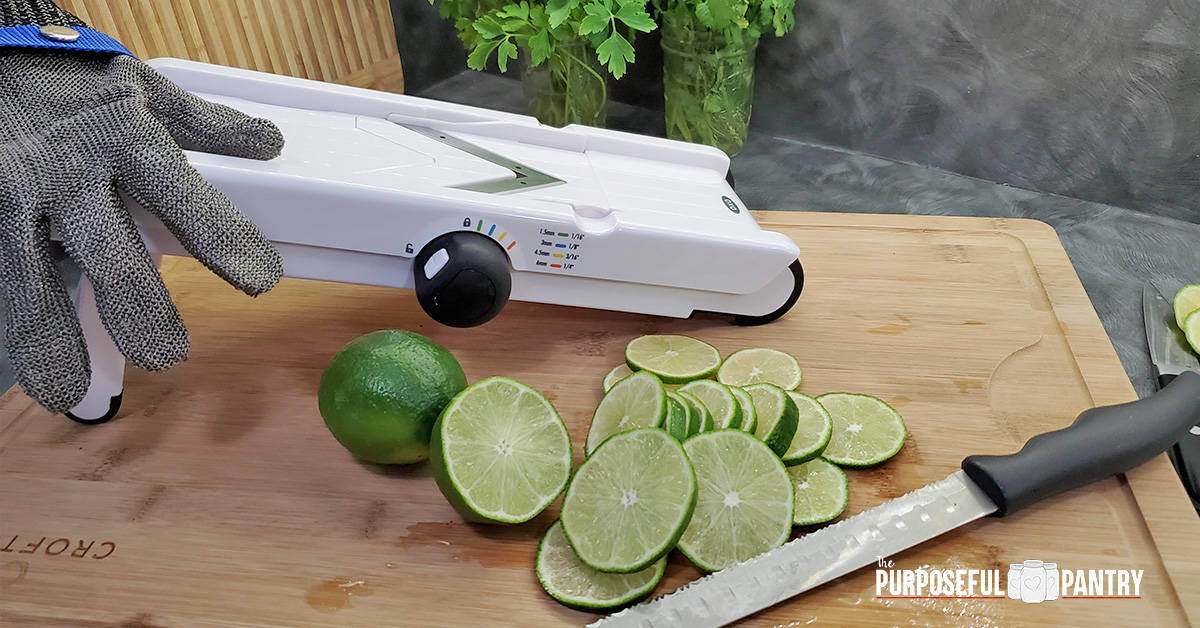
Step Two
Slice into 1/4″ slices (6-7 mm). You can go thicker, but they will take longer to dry. Thinner works fine as well. A sharp, serrated bread knife makes a great tool to cut your limes by hand.
Tip: If using a mandoline or meat slicer, cut the end of the lime to give yourself a flat surface.
Tip 2: PLEASE remember to wear a protective cutting glove when using a mandoline. Even if you can use the guard that comes with the machine, hands and surfaces become slick.
Step Three:
Place slices on trays. You can pack them fairly close together without overlapping. Some airflow is nice, but they don’t need a ton of space, nor will they shrink much.
Dry at 125°F/52°C or lower for 18-36+ hours.
While the recommended temperature for fruit is 135°F/57°C, limes often darken during the drying phase as the sugars brown from the heat. Dropping the temperature can help prevent that, though you do have to add a little more time to the drying process.
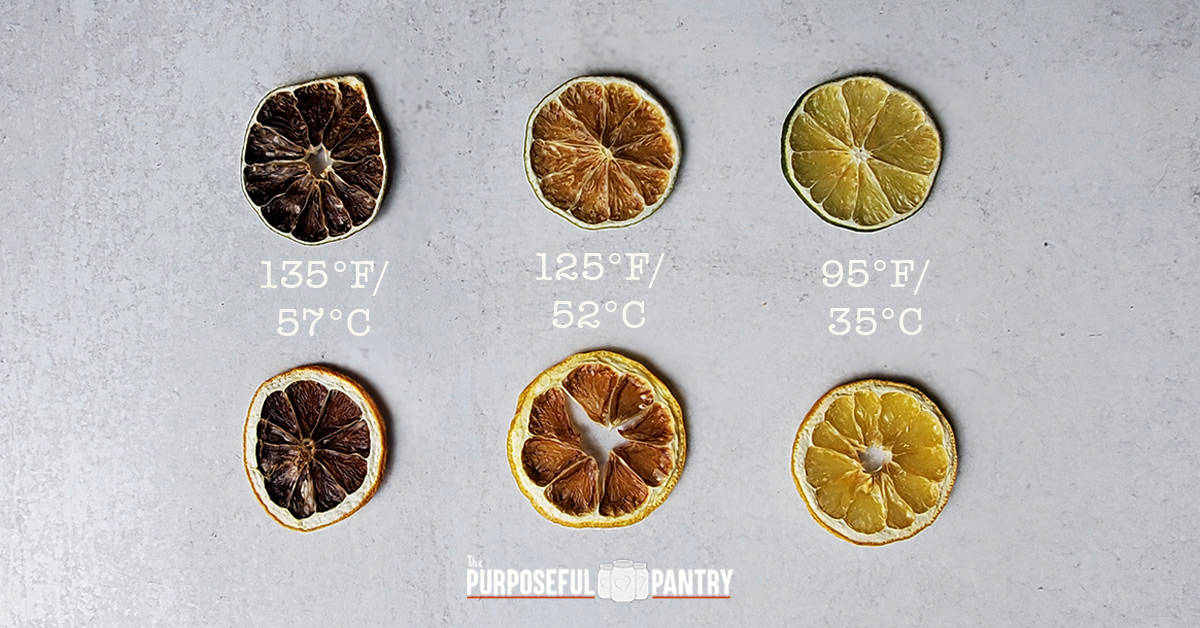
You can use a liner such as silicone mesh or parchment paper, but it’s not generally necessary.
Tip: Flip your slices after three to four hours, and every five hours to keep them from sticking to your trays.
Step Four:
Test. Allow a sample or two to come to room temperature. It is fully dry when you can snap it in two easily, and there is no moisture in the cells of the flesh.
Step Five:
Condition. The conditioning process is essential to allow all slices to come to a median humidity and check for any moisture issues. This helps prevent mold in storage. If you haven’t heard about conditioning dehydrated food, you can check out this blog post that teaches how to condition dehydrated food.
Storage:
Store in an airtight container for up to eighteen months, though you’ll likely get a much longer time with proper storage techniques. Shelf life is best if you can store out of direct sunlight in a dark, cool, dry place. I use mason jars, but mylar bags are good, too.
A note about storing dried limes slices (and other citrus wheels). Your citrus may turn darker over time in storage. This is often caused by exposure to direct sunlight, but it does not affect the limes.
Blanching Limes
If you’ve had dried limes before and felt they were just too bitter for you, I found a great solution!
Blanching limes before drying helps remove some bitterness from the fruit, making your final product taste more like lime and less like the pith. Give it a try the next time you dehydrate oranges!
Steps:
- Slice limes.
- Blanch in boiling water for 2 minutes.
- Immediately place into an ice bath to stop the cooking process.
- Dehydrate using the above directions.
Oven Directions:
- Slice limes into ¼” slices with a sharp knife.
- Place parchment paper onto a wire cooling rack. Placing this onto a baking sheet can be helpful for control in moving in and out of the oven.
- Place lime slices in a single layer.
- Turn the oven to the lowest temperature, preferably 170°F/60°C or below. Use a wooden spoon or oven-safe silicone oven pad to prop the door open to lower the temp if necessary.
- Flip lime after 2 hours.
- Dry until completely dry, approximately 3-5 hours.
- Store as above.
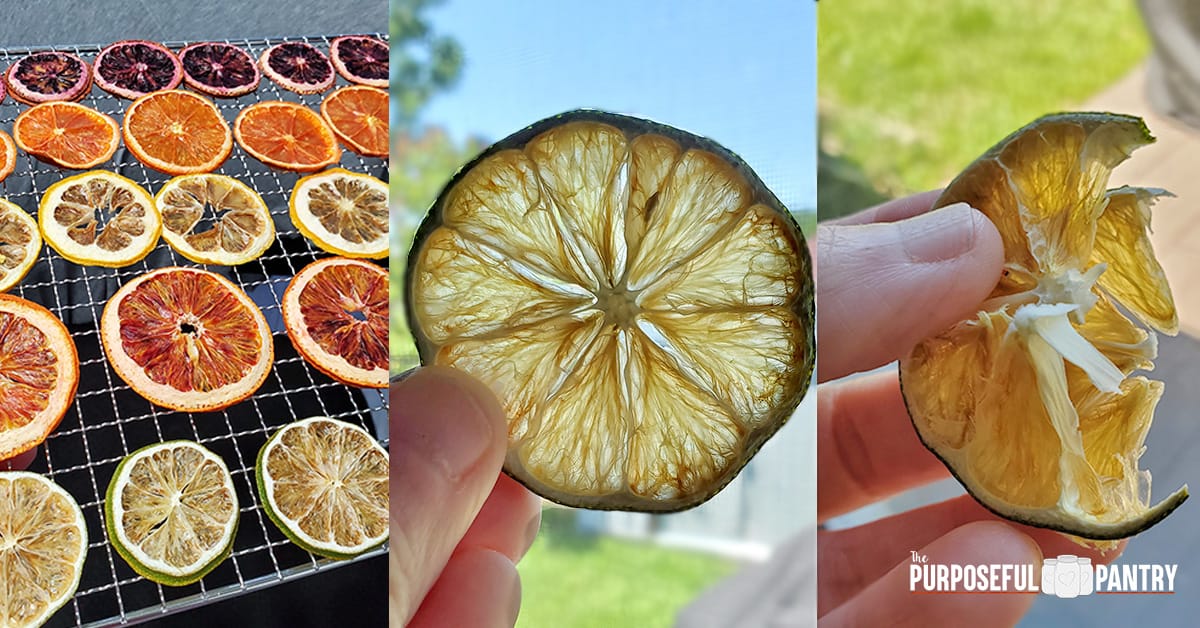
How to Use Dried Lime Slices
Your dehydrated lime slices will look so pretty in your containers, but they have many more uses than simply throwing in a potpourri bowl.
- Roast chicken: Place slices in the cavity or make a bed for the chicken to sit on.
- Place slices on fish to bake.
- Snack on them! Their bitter/tart flavor is a fun treat. (Tip: You can take off the peel and just eat the fleshy bit if it is too bitter for you).
- Drop a slice or two into your Taco Soup in a Jar mix, or into a ramen bowl.
- Powder for lime powder (see directions below)
- Slip into a glass of water or tea to bring a bright lime flavor.
- As a garnish on cocktails
- Decorating (Remember to spray with a protective coating if displaying citrus on a wreath or other decoration for any period to seal it)
- Potpourri or a simmer pot.
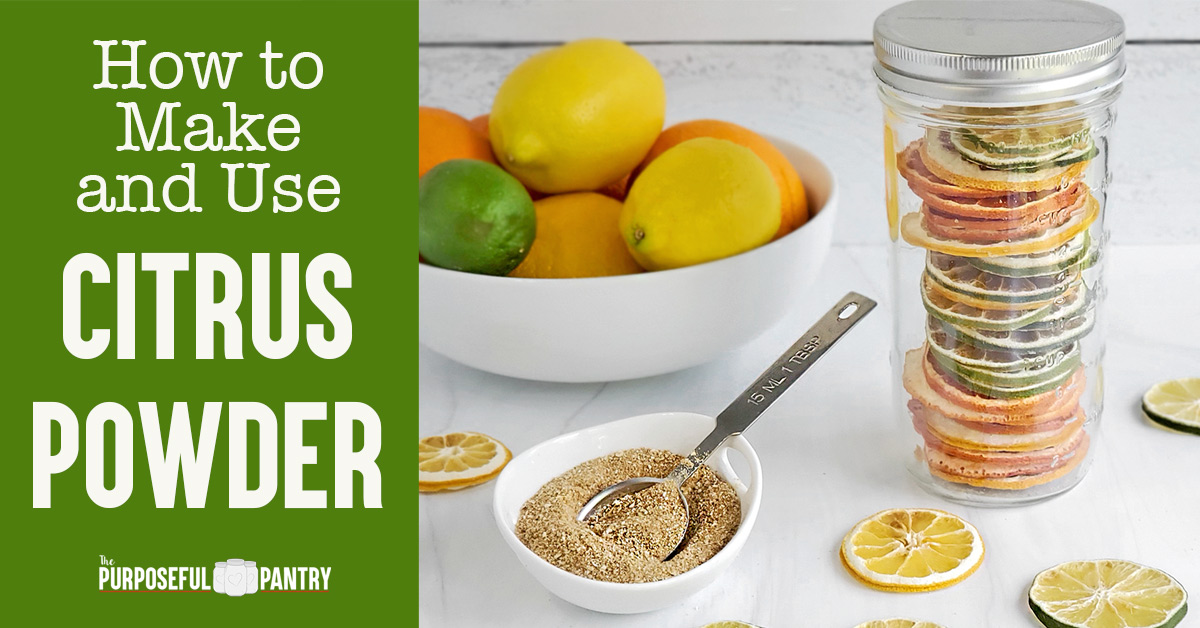
How to Make Lime Powder
Dry limes thoroughly with the instructions above. Your lime slices must be completely dry before powdering.
- Break slices up into the grinder of your choice. I happen to use a NutriNinja most often, but a coffee grinder or large blender works well, too.
- Pulse your grinder four or five times before commencing to a sustained grind.
- Strain out the powder with a fine-mesh strainer, then grind the leftover bits again.
- Condition: Place powder on parchment paper on a cookie sheet in a warmed (but off) oven OR back into your dehydrator in coffee filters, muffin papers, etc. to dry for 15-30 min
- Allow to come to room temperature, then store in an airtight container, preferably with a moisture absorber. Follow these tips to prevent clumping in your lime powder.
LEARN MORE: 25+ Ways to use Fruit Powder
Uses for Lime Powder
This list can be for full limes, lime flesh, or just lime zest. Zest gives a less bitter flavor, and most lime powder when using whole limes is not bitter unless your limes have an unusually large pith in them. Those are usually from very immature limes
- Use lime in your salt rim for citrusy cocktails
- Add to an herb mixture for cooking chicken
- Use as a flavoring on tortilla chips
- Add to tea blends for a fresh, citrusy flavor
- Add to ceviche to up the lime flavor
- Add to pico de gallo or hummus to change the flavor profile
Dehydrating Citrus Varieties
You can get more specific information on drying your favorite type of citrus here:
- Citrus
- Grapefruit
- Lemon
- Lime
- Orange (Blood orange, mandarin, navel, Cara Cara, etc.)
Commonly asked questions
Typically, most dehydrated foods are best within a twelve to eighteen-month window that you dry them, according to the National Center for Home Food Preservation. However, with proper airtight storage techniques, you’re likely to get a much longer time from them.
Yes, you can. While lime peels are edible, you need to weigh the organic vs. conventional citrus debate about clean fruit.
Rinds can also be very bitter depending on the pith within the fruit and how much there is.
Time is relative when dehydrating. It depends on your machine, your home’s humidity, the moisture in your fruit, how thick you’ve cut the slices, etc. Use the time mentioned as a window of time, not an exact. Keep drying if they aren’t fully dried, yet!
Yes, lime works as a great pretreatment to prevent oxidation in fruits!
And if you want to see how to make and store citrus powder – watch now!

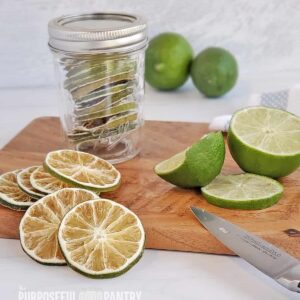
Dehydrate Lime
Equipment
Ingredients
- Citrus of your choice
Instructions
- Wash limes well
- Slice into 1/4 slices
- Dry at 125F°C / 52°C for 18-36 hours
- Dry when they snap when cooled and no moisture is evident
- Condition
- Store in an airtight container
Video
Darcy’s Tips
-
- Roast chicken: Place slices in the cavity or make a bed for the chicken to sit on.
-
- Place slices on fish to bake.
-
- Slip into a glass of water or tea to bring a bright citrus flavor.
-
- Dip in chocolate to eat as treats or share as gifts
-
- As a garnish on cocktails
-
- Decorating (Remember to spray with a protective coating if displaying citrus on a wreath or other decoration for any period of time to seal it)
-
- Potpourri
-
- Use your favorite citrus zester to remove the zest (minus the white pith), lay between two paper towels, and allow to air dry for a day or so.
-
- You can also place them in a coffee filter or onto dehydrator trays on your dehydrating trays and dry at 95°F/35°C until dry.
-
- Peel citrus like an apple, and place the zest slices onto dehydrator trays to dry at 95°F/35°C until crisp (approximately 8 hours).
Nutritional information is an estimation only. Nutrient information for dehydrated foods is based on fresh. Use 1/4 of the servicing size for the same nutrient information. Thus 1 Cup of fresh fruit has the same sugars as 1/4 dried.
©ThePurposefulPantry. Photographs and content are copyright protected. Sharing of this recipe’s link is both encouraged and appreciated. Copying and/or pasting full recipes to any social media is strictly prohibited.

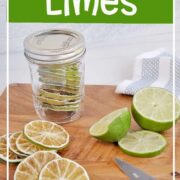
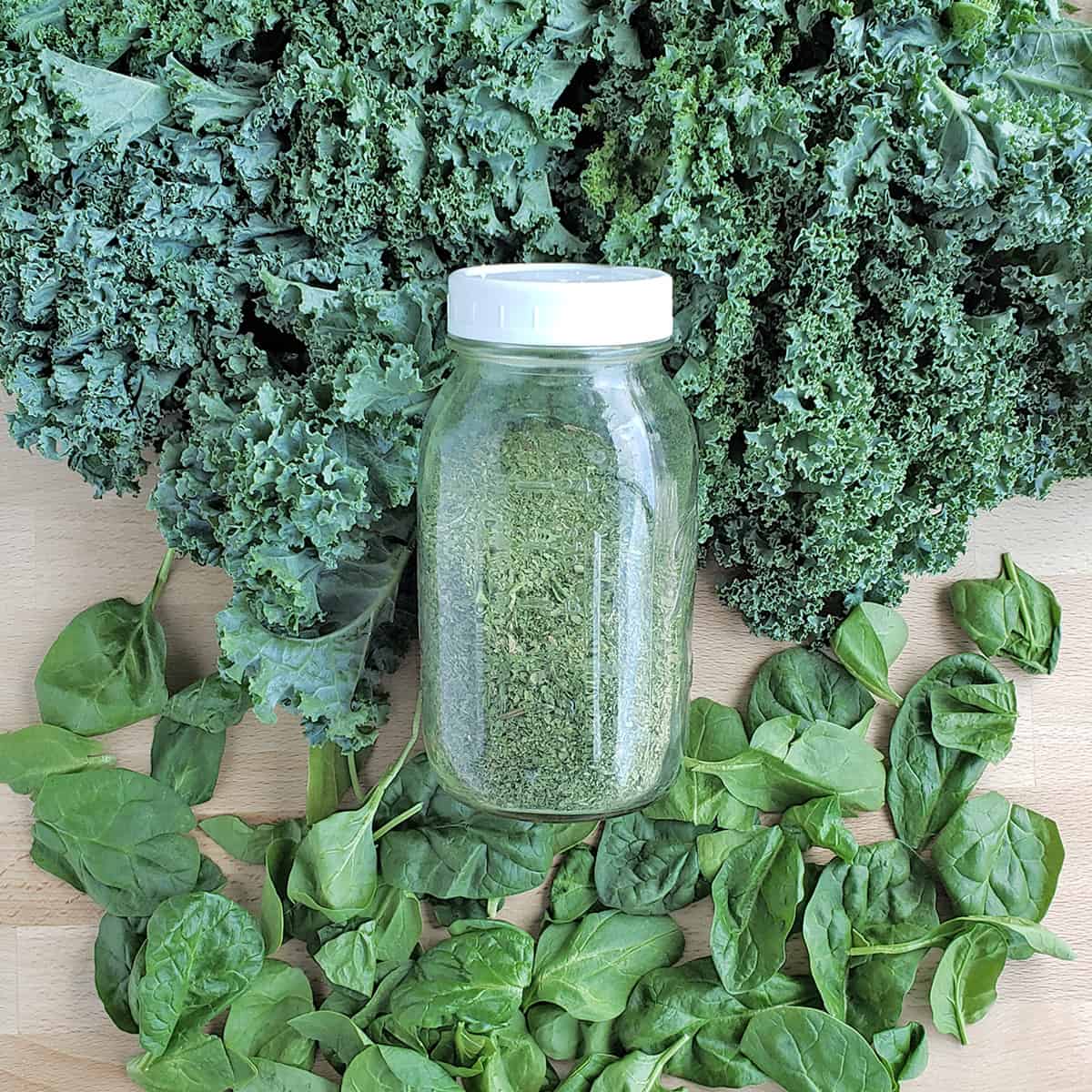
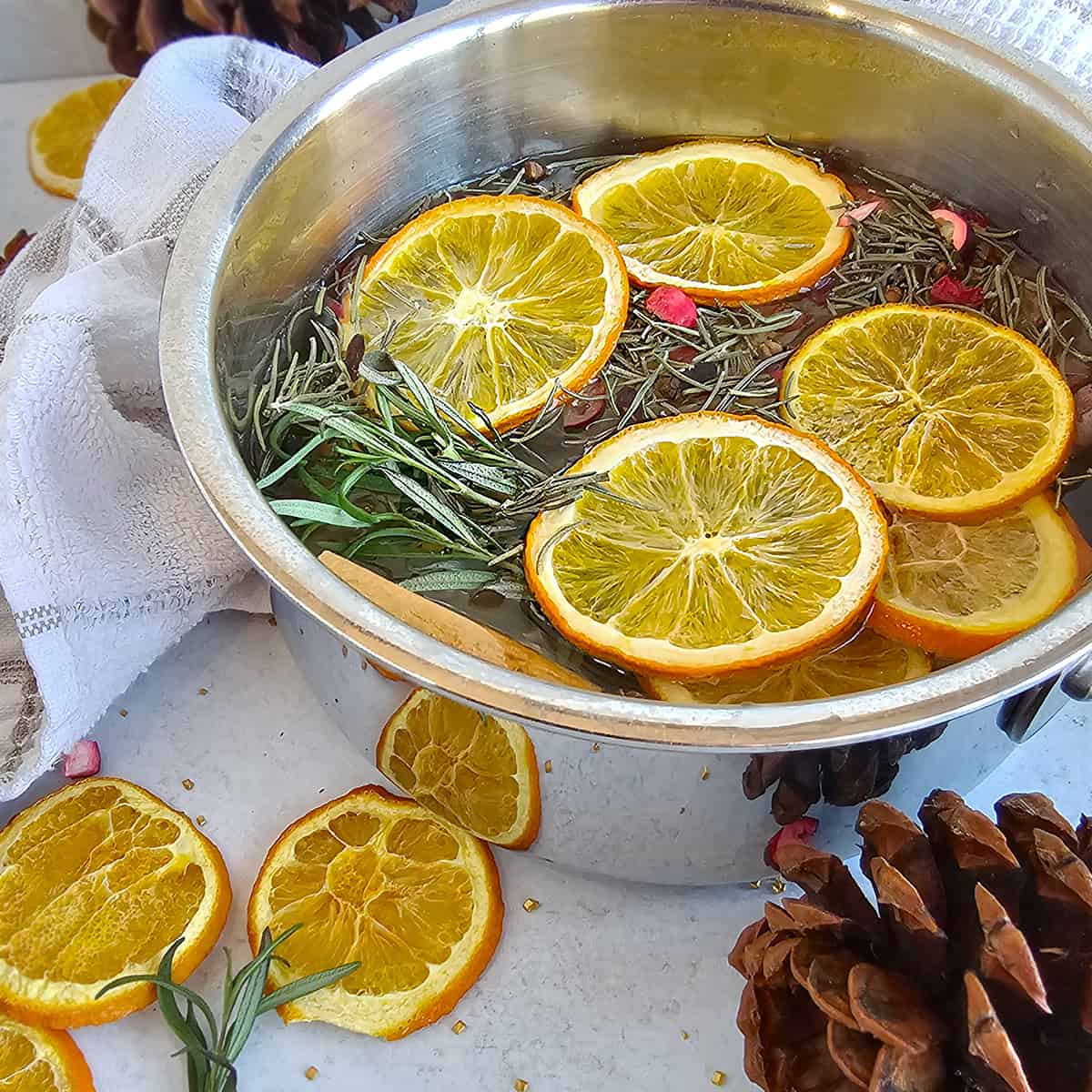
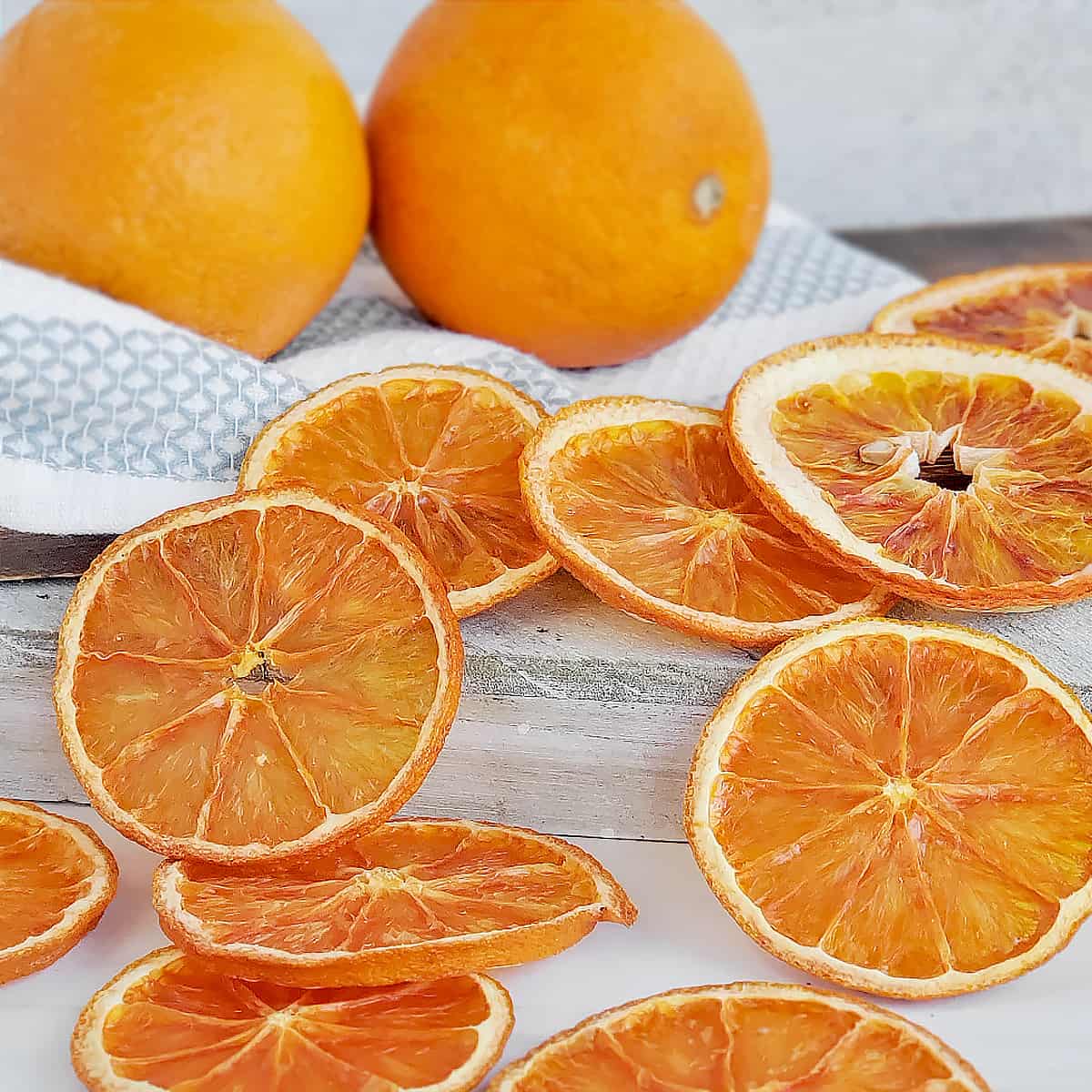
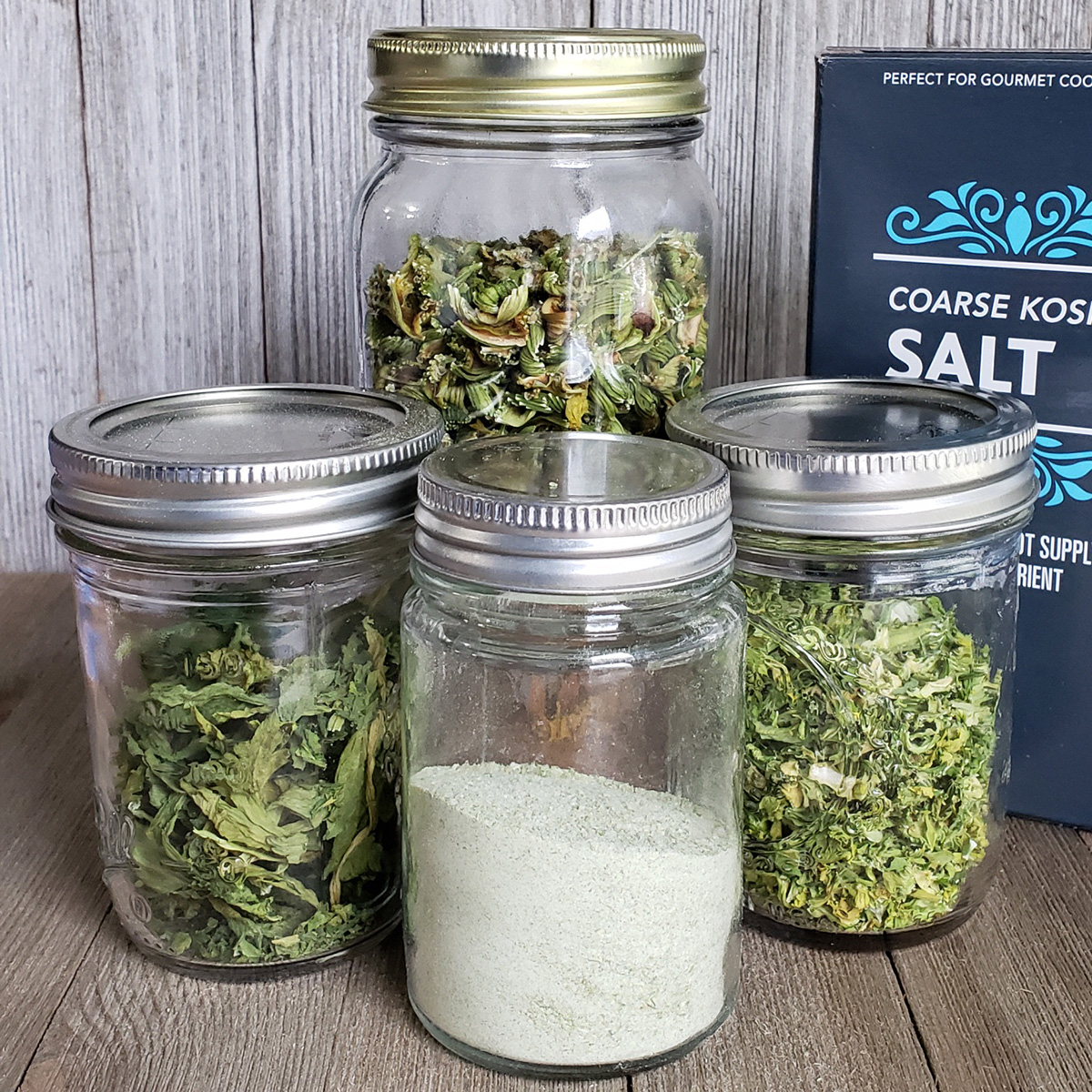
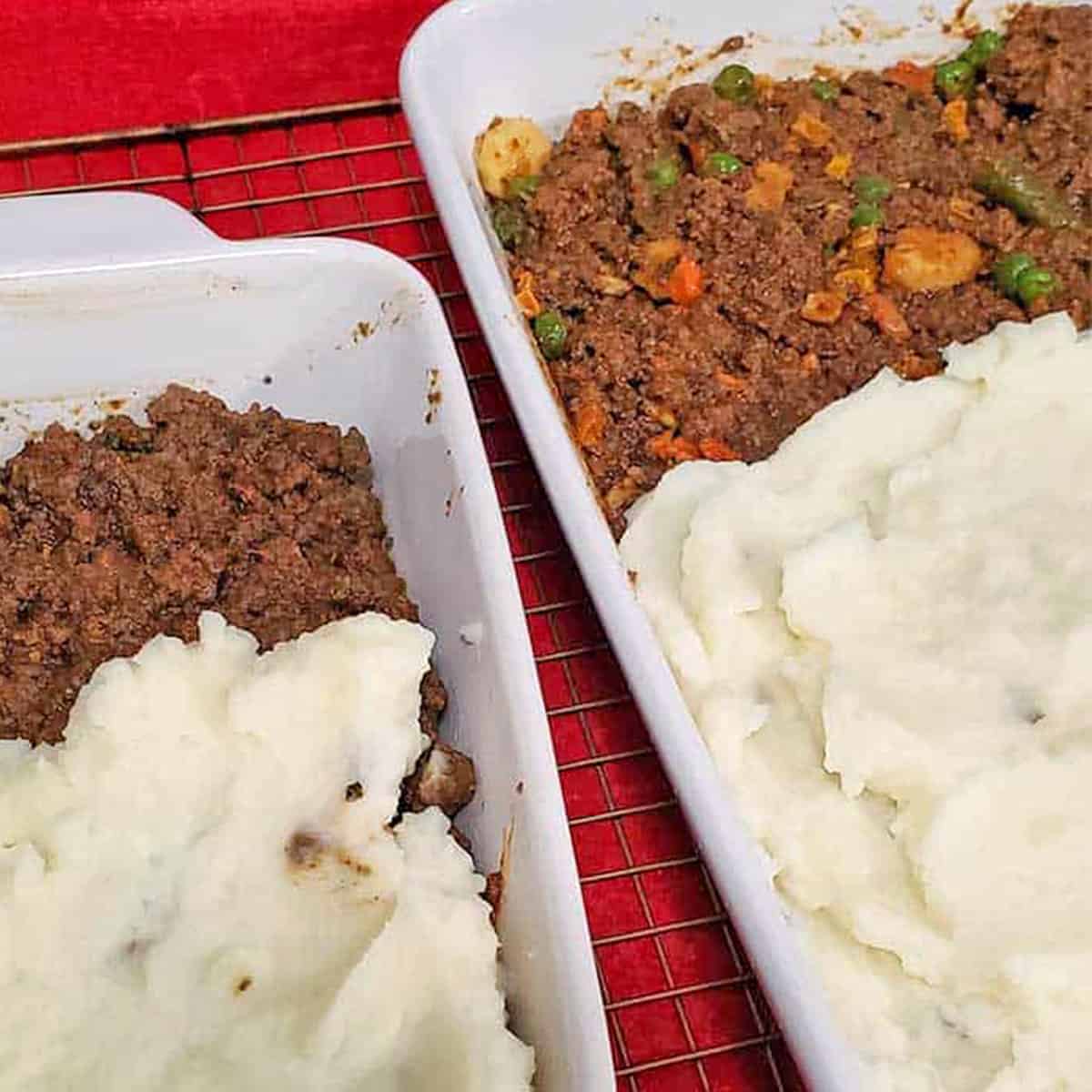
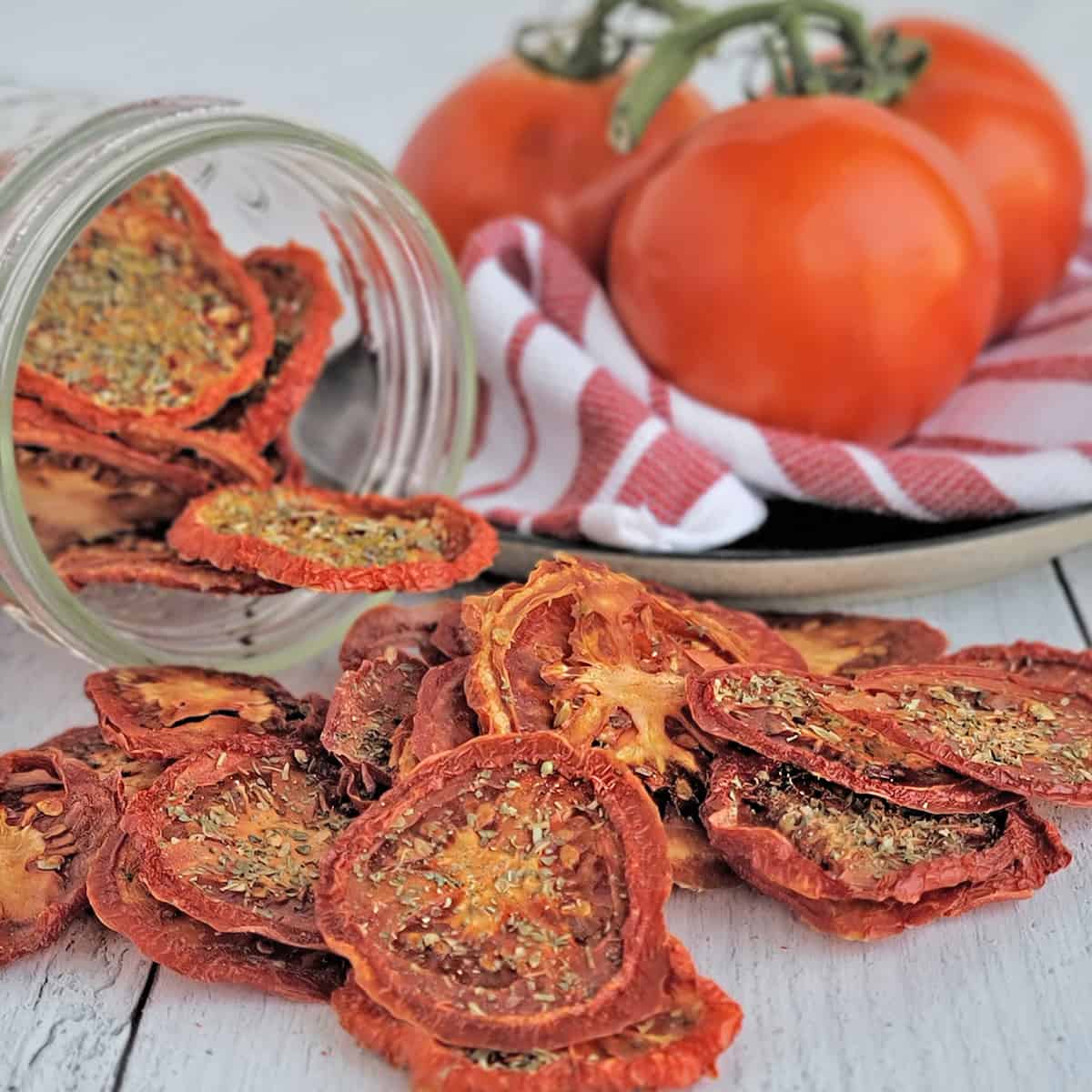
Thank you for all this information on dehydrating limes. Have you ever dehydrated candied limes?
No, I haven’t, but you can easily do it on a low setting.